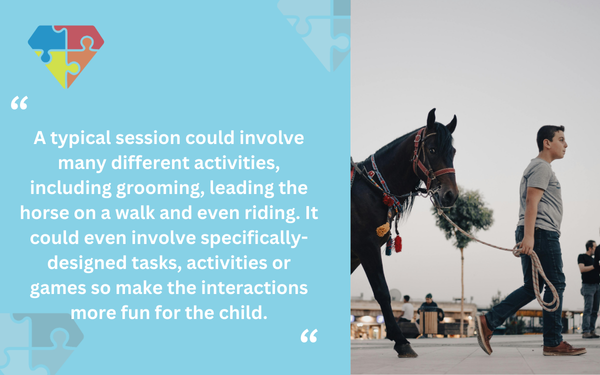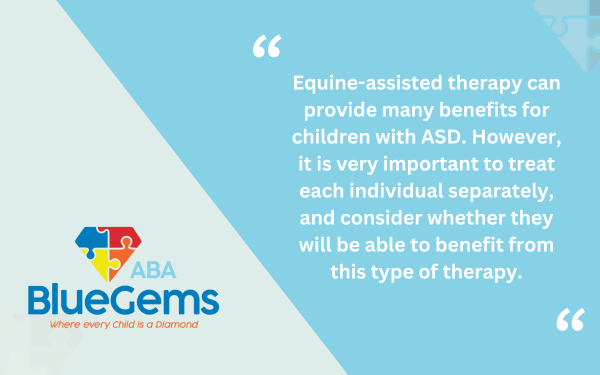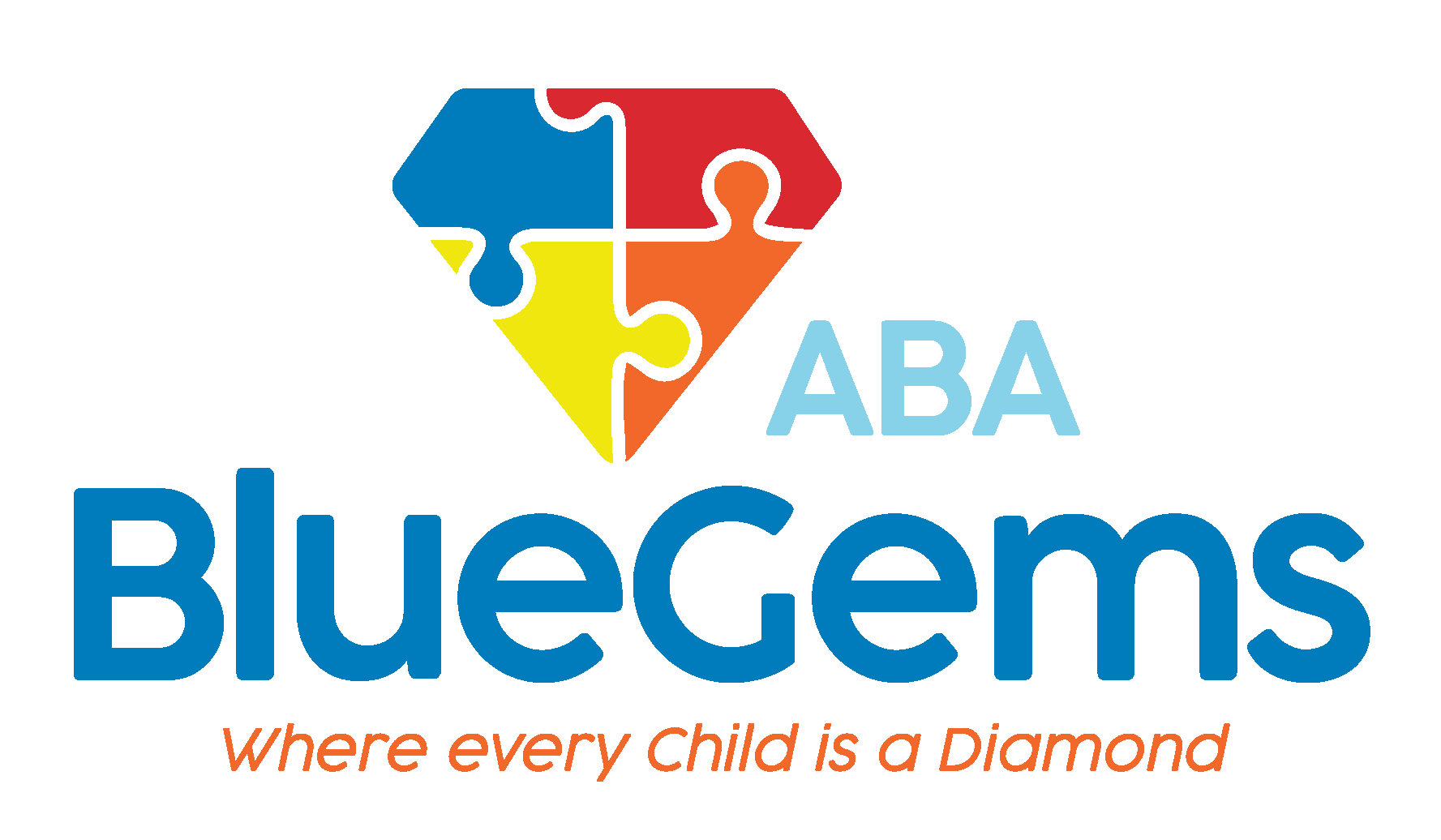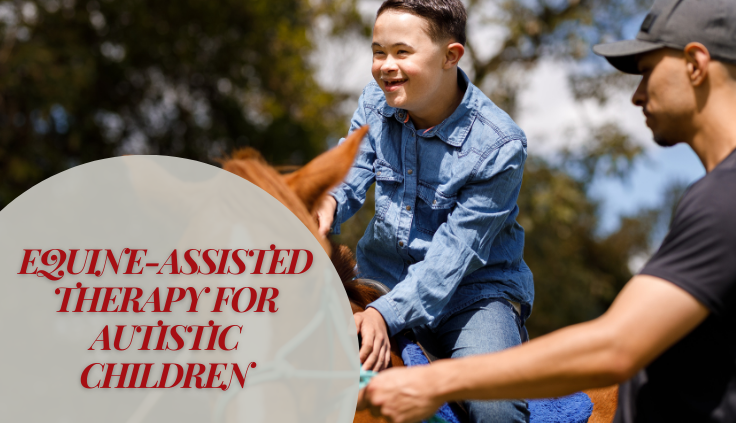Equine-Assisted Therapy for Autistic Children
Animals have long been known to provide many benefits for people, especially those who have special needs such as children with autism spectrum disorder (ASD). Dogs are the most commonly-used animal in therapies for children with autism, though horses are also starting to be integrated in some specialized therapies.
Equine-assisted therapy uses horses to provide specific benefits to children with special needs. They can help them improve their behavioral, emotional and physical functioning.
Through the help of a therapist who is certified to work with horses, as well as a handler, equine-assisted therapy can provide children on the autism spectrum with a controlled and safe chance to interact with a horse in an educational and therapeutic way.
In this article, we’ll discuss what equine-assisted therapy for autistic children is and what benefits it can provide.
Table Of Contents
How Does Equine-Assisted Therapy for Autistic Children Work?
Equine-assisted therapy for autistic children is designed to specifically cater to the unique strengths and needs of the individuals involved. The horses that are used in this type of therapy are specifically trained to teach children how they can put trust in others, how they can be responsible and how they can control emotions.
The activities that the horse engages in with the children are specifically designed to provide a controlled and safe way for them to interact so that they don’t become scared or overwhelmed.
The idea behind equine-assisted therapy is to help the child form a bond with the horse, which then can lead to improved confidence and self-esteem. Not only that, but working directly with the horse can promote positive behaviors, helping children with ASD learn how best to interact with others.
A typical session could involve many different activities, including grooming, leading the horse on a walk and even riding. It could even involve specifically-designed tasks, activities or games so make the interactions more fun for the child.

The trained therapists will monitor the horse, the child and the interactions between them to ensure that the child feels safe and supported throughout the entire experience.
What Benefits Does Equine-Assisted Therapy Provide for Autistic Children?
Like other forms of animal assisted therapy, equine-assisted therapy is designed to help children with ASD build social and communication skills, while also improving behaviors and aiding their physical development.
As is the case with applied behavior analysis (ABA therapy), equine-assisted therapy can be designed in a way to address specific concerns or challenges that each individual patient is experiencing. They can also be customized to the child’s preferences and interests.
Equine-assisted therapy can also be considered holistic in nature, since it seeks to take an overarching approach to supporting children on the autism spectrum. It helps them improve emotional and cognitive functioning, while teaching them empathy, responsibility and how to lead.
How Does Equine-Assisted Therapy Work Best?
Equine-assisted therapy can provide many benefits for children with ASD. However, it is very important to treat each individual separately, and consider whether they will be able to benefit from this type of therapy.

In addition, it’s essential to consider their individual needs, strengths and interests so that the therapy can be targeted to them specifically.
While equine-assisted therapy can certainly be beneficial, it shouldn’t be the sole treatment for children with autism. Instead, it can serve as a great complement to an overarching treatment plan such as ABA therapy.
Considered the gold standard of treatment options for children with autism, ABA therapy takes a science-based approach to learning and behavior. ABA therapy teams craft individualized treatment plans for each patient that are catered to their unique strengths and challenges, which results in better outcomes.
By using many different strategies and tools at their disposal, therapists can help children with autism build the social, communication and daily life skills they may struggle with, while also helping them modify negative and/or harmful behaviors.
Blue Gems ABA Provides Children with ASD Excellent Support Services
Equine-assisted therapy is a great way to provide complementary support to children on the autism spectrum. When used in conjunction with ABA therapy, it can help children build social and emotional skills, while also reducing stress and anxiety.
At Blue Gems ABA, we provide children with ASD with well-rounded support services that are based on the principles of ABA therapy. Our experienced BCBAs target the specific skills and behaviors that each child needs to build, and then address them on an individual basis, helping them lead happy, healthy, productive, fulfilling and independent lives.
To learn more, please contact us today.




